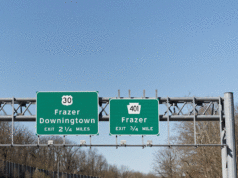Dr. Zahi Abou Chacra completed his medical education at McGill University School of Medicine and the University of Montreal, specializing in Otolaryngology – Head and Neck Surgery. He holds double board certifications from the Royal College of Physicians and Surgeons of Canada and the American Board of Facial Plastic and Reconstructive Surgery. In the following article, Dr. Zahi Abou Chacra guides individuals through what the entire process of Cosmetic Rhinoplasty is like at his private practice, Clinique 7, which is located in Montreal, Quebec, Canada, from the initial consultation to post-operative care and recovery.
Rhinoplasty is a surgical procedure aimed at enhancing the appearance and/or functional aspects of the nose. In Montreal, Quebec, and Canada as a whole, the procedure has become increasingly popular as individuals seek to improve their facial harmony and boost their self-confidence. However, undergoing any surgery is a significant decision that requires careful consideration and preparation. Dr. Zahi Abou Chacra’s boutique medical practice is the first of its kind in Montreal, exclusively offering Custom Rhinoplasty.
Zahi Abou Chacra Discusses the Initial Consultation
When considering Cosmetic Rhinoplasty, the first step is to schedule a consultation with the surgeon. During this consultation, patients will have the opportunity to discuss their goals, expectations, and desired outcomes for the procedure. Dr. Chacra carefully evaluates his patient’s nasal anatomy, assesses their candidacy for the procedure, and explains the surgical techniques that will be used to achieve the desired results.
Effective communication with your surgeon during the consultation is critical to the success of the surgery. By clearly articulating personal expectations, patients help their surgeon understand their desired outcomes, which is essential for achieving a satisfactory result. This conversation also provides an opportunity for patients to discuss any apprehensions they might have, such as fears about the surgery, the recovery process, or potential risks and complications. Addressing these issues upfront helps build trust and ensures patients feel more comfortable and informed about the procedure. At Clinique 7, Dr. Zahi Abou Chacra says that he feels, “Informed patients are empowered patients.”
During the consultation, your surgeon will also conduct a thorough review of your medical history. This includes an assessment of any previous surgeries, medical conditions, allergies, and current medications or supplements you are taking. Understanding your medical background is vital for the surgeon to identify any potential risk factors that could affect the safety and success of the Rhinoplasty surgery. For instance, certain health conditions or medications might increase the risk of bleeding or other complications during or after surgery. By evaluating this information, your surgeon can take necessary precautions and tailor the surgical plan to mitigate risks, ensuring a safer procedure and smoother recovery. You may be asked to undergo pre-operative testing at the surgeon’s discretion.
Additionally, the consultation is a time for the surgeon to perform a detailed physical examination of your nose and facial structure. This examination helps the surgeon determine the best surgical techniques to achieve your aesthetic goals while maintaining or improving nasal function. Dr. Zahi Abou Chacra implements taking photos of his patients and uses computer imaging to show potential outcomes, giving patients a realistic expectation of the results. This is also an opportunity for patients to participate in the design process of their new nose.
The surgeon will also explain the details of the Rhinoplasty procedure, including the type of anesthesia required, the estimated duration of the surgery, as well as the post-care and long-term recovery process. They will provide information about what to expect before, during, and after the procedure, including instructions for pre-operative and post-operative care. Understanding these aspects helps individuals prepare mentally and physically for the procedure, leading to a more positive experience. By spending meaningful time with his patients in consultation, Dr. Zahi Abou Chacra believes this leads to higher patient satisfaction. Consultations regarding something as complex as a Rhinoplasty should be unhurried, thorough and comfortable enough that patients feel heard, and their desires considered.
Ultimately, a thorough consultation fosters a collaborative relationship between you and your surgeon, ensuring that both parties are aligned in their expectations and plans for the Rhinoplasty. This comprehensive approach is essential for achieving the best possible outcome, both aesthetically and functionally, while prioritizing your safety and well-being.
Surgical Planning
Once you have decided to proceed, your surgeon will work with you to develop a customized surgical plan tailored to your unique facial features and aesthetic goals. This plan will outline the specific changes that will be made to your nose, including adjustments to the nasal bridge, tip, nostrils, and overall size and shape.
Your doctor may use computer imaging technology to provide a visual representation of the expected results, allowing you to preview potential outcomes and make informed decisions about your treatment plan. Zahi Abou Chacra, MD FRCSC explains that together, you and your surgeon will collaborate to ensure that the surgical plan aligns with your expectations and desired aesthetic outcome.

Surgical Procedure
On the day of surgery, patients of Zahi Abou Chacra are admitted to a fully accredited surgical facility where the operation will take place. The surgery is typically performed under general anesthesia, or local anesthesia with deep sedation to ensure the patient’s comfort and safety throughout the procedure.
During the procedure, the surgeon will make carefully planned incisions inside the nostrils or across the columella (the tissue between the nostrils) to access the underlying nasal structures. Depending on your surgical plan, your surgeon may remove or reshape cartilage and bone, adjust the nasal tip, and refine the nasal contours to achieve the desired aesthetic outcome.
After completing the necessary modifications, your surgeon will close the incisions, in the event of an Open Rhinoplasty, with sutures and apply an external splint to support the newly shaped nose during the initial stages of healing.
Recovery and Post-Operative Care
Dr. Zahi Abou Chacra explains that following Rhinoplasty surgery, patients are monitored closely in a recovery room until they are fully awake and alert. Your surgeon will provide detailed instructions on post-operative care, including medication management, wound care, and any specific restrictions.
During the initial recovery period, you may experience some swelling, potential bruising, and minimal discomfort around the nose and upper face. These symptoms are normal and typically subside within the first week after surgery. To minimize swelling and promote healing, it’s essential to keep your head elevated, avoid strenuous activities, and follow your surgeon’s recommendations for optimal recovery.
Over the coming weeks and months, you will gradually see the healed results of your Rhinoplasty as swelling continues to diminish and the nasal tissues settle into their new position. Your surgeon will schedule multiple follow-up appointments to monitor your progress, address any concerns, and ensure optimal healing and aesthetic outcomes.
Conclusion
Cosmetic Rhinoplasty is a transformative procedure that can enhance your facial harmony and improve your self-confidence. By following a comprehensive guide from consultation to recovery, you can approach Rhinoplasty surgery with confidence and achieve the results you desire. Dr. Zahi Abou Chacra says that if you are considering Rhinoplasty in Canada, be sure to consult with a qualified, experienced and ethical plastic surgeon or facial plastic surgeon who can guide you through the process and help you achieve your aesthetic goals.









